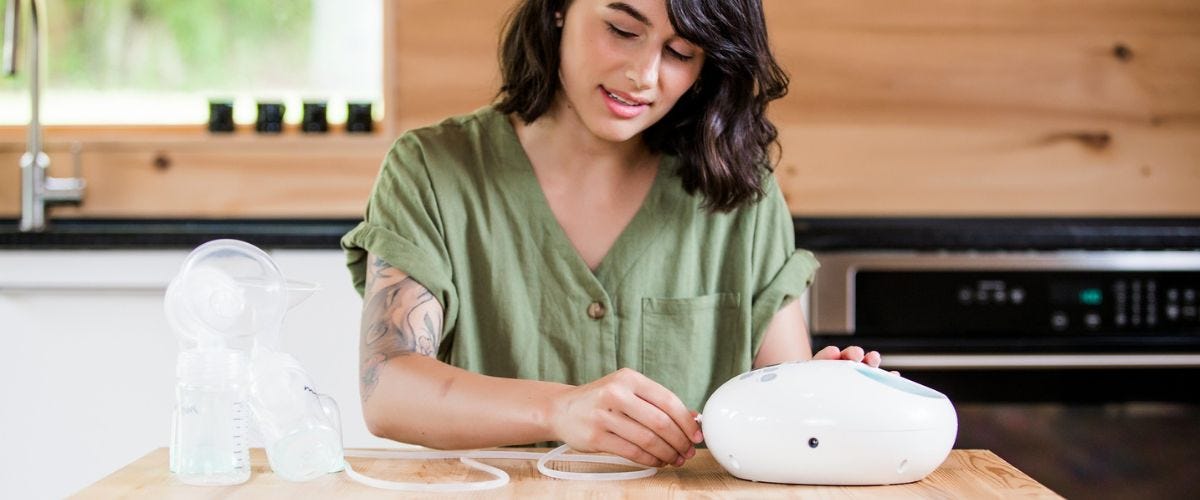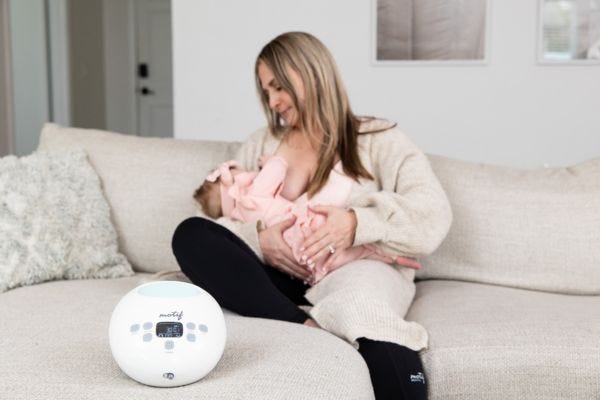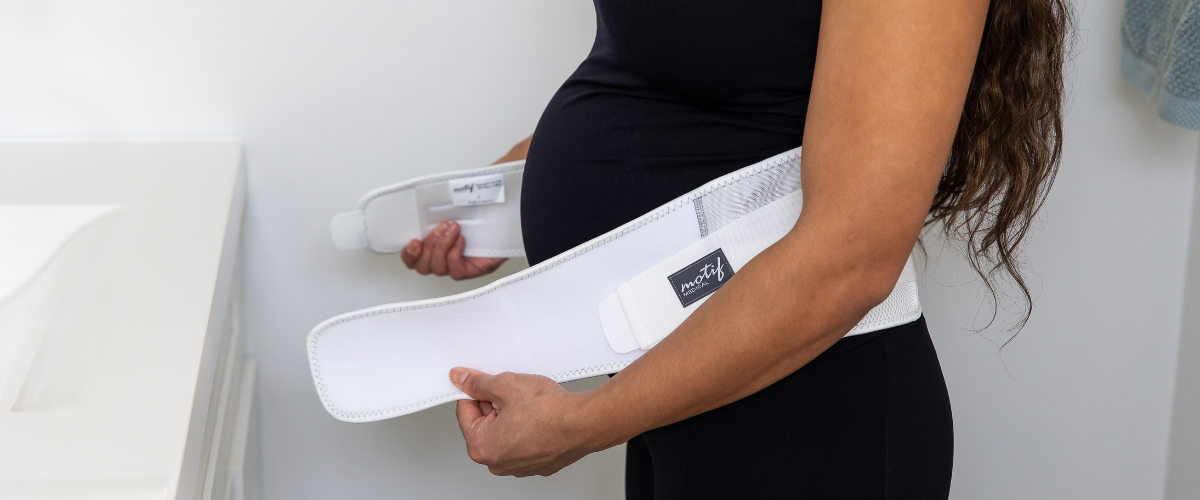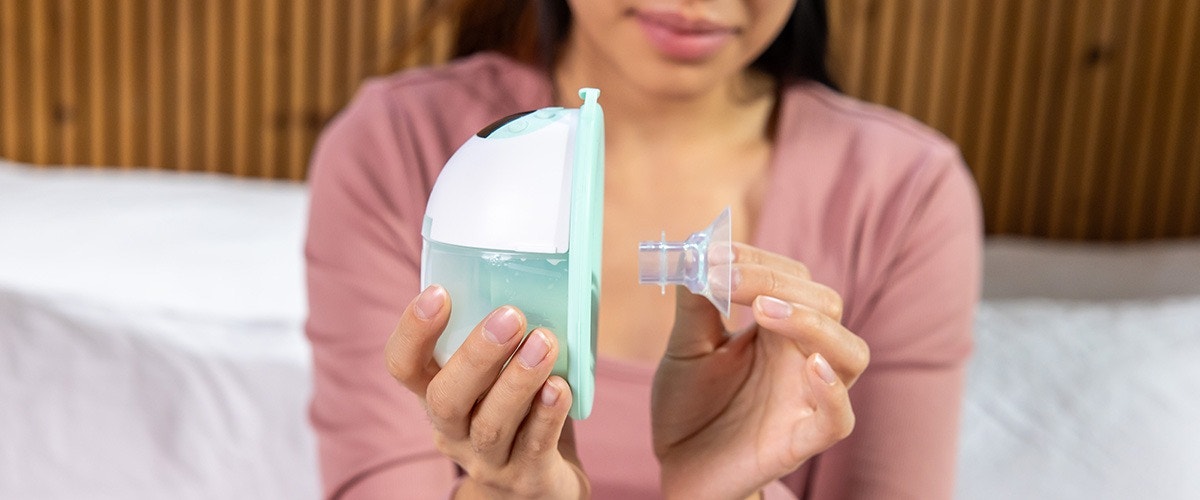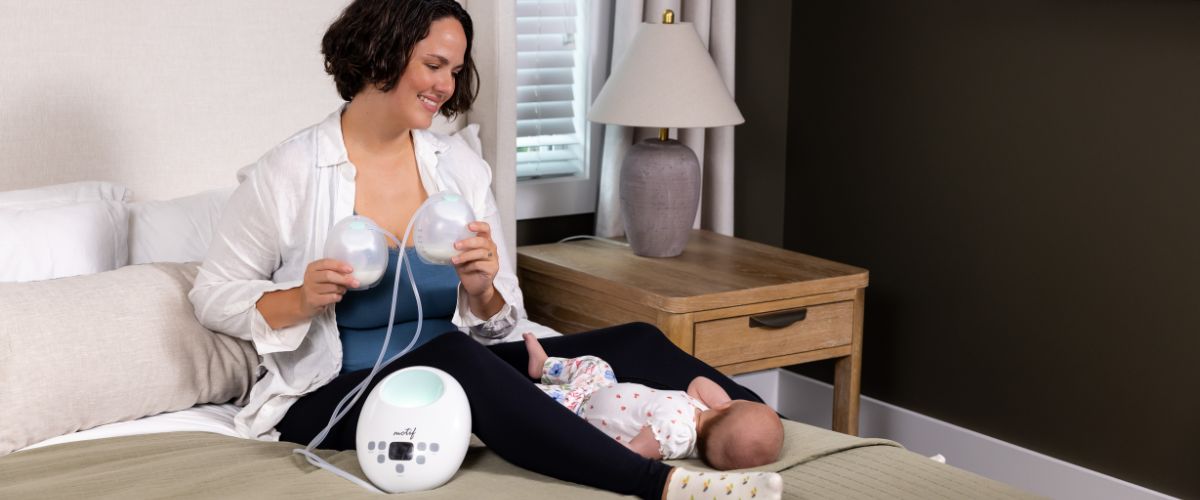How Can I Increase My Breast Milk Supply?
Whether you’re just getting started on your breastfeeding journey or you're several months in, AdaptHealth and Motif are shedding light on frequently asked questions.
When should I schedule my first visit with an IBCLC?
It’s a great idea to set up an IBCLC visit while you’re still pregnant. This allows time to get your questions answered before baby is born and to make a breastfeeding plan that supports your feeding goals.
How can I increase my breast milk supply?
Before changing up your routine, determine if there is truly a need to increase your milk supply. Many mothers experience what is called “perceived low milk supply” when in reality, they’re making exactly what their baby needs. If your baby is making adequate wet and dirty diapers and gaining weight well, then you’re producing exactly what they need. If you determine that your milk supply needs a boost, the best way to increase milk supply is to pump or nurse more frequently. If your baby is exclusively nursing, adding one to two 10-minute pump sessions a day may be all that’s needed. If you’re pumping part of the time or exclusively, ensure you have the right flange size and that your pump is up to the task.
The Motif Luna is covered by insurance and is a top choice for increasing and sustaining milk production. Incorporating a few minutes of hand expression after pumping and nursing sessions is another great way to boost supply. If you are still struggling with supply after increasing the number of times milk is removed (either through nursing or pumping), it’s best to work with an IBCLC (International Board Certified Lactation Consultant) to get to the root cause of low supply and to make a plan that helps you move toward your breastfeeding goals.
How Do I Know My Baby is Getting Enough Milk?
- Lots of wet and dirty diapers
- Day 1 - at least 1 wet and 1 dirty
- Day 2 - at least 2 wet and 1 dirty
- Day 3 - at least 3 wet and 3 dirty
- Day 4 - at least 4 wet and 3 dirty (stools should be yellow and seedy)
- Day 5 and up to 4 weeks - at least 6 wet and 3+ dirty (larger than a quarter)
- Hearing and seeing lots of soft swallows
- Meeting developmental milestones
- Feeding at least 8 times every 24 hours
- Gaining weight well and staying on their growth curve
- Back to birth weight by about 2 weeks of age.
- No pain with nursing
- No nipple damage
- No clogged ducts (ductal narrowing)
- Breasts feel lighter and softer after feedings
When Should I Start Pumping?
If your goal is to feed baby directly at the breast, there is no need to pump in the first 4-6 weeks unless you need to increase your milk supply or you are going back to work before 6 weeks postpartum. Introducing pumping at around 4-6 weeks means you’ll also be able to introduce baby to bottle feeding at just the right time. If you plan to exclusively pump, you’ll need to start soon after baby is born. Hand expression is one of the best ways to remove colostrum, but adding pumping helps tell your body there is a baby to feed.
Which pump settings should I use?
The goal of a pumping session is to mimic the way a baby nurses at the breast.
- Start with a faster, more gentle setting (massage or letdown mode)
- Switch to a slower, longer setting once your milk starts flowing (expression mode)
- Remember not to increase the vacuum beyond what is comfortable
- Return to those faster, gentler setting for 1-2 minutes about halfway through your pump session (massage or letdown mode)
- Finish up with a slower, longer setting for the last several minutes (expression mode)
How long should I pump for?
For optimal milk removal and comfort, it's recommended to pump for 15-20 minutes per breast, with sessions not exceeding 30 minutes. Using hands-on pumping such as gentle breast massage and compression before, during, and after pumping, is a proven way to enhance milk flow and efficiency. This technique can help you see more milk in a shorter amount of time.
What is power pumping?
Power pumping involves pumping for one full hour 1-2x a day to mimic cluster feeding. For power pumping, begin by pumping for 20 minutes, then take a 10-minute rest, and then, pump for another 10 minutes. Repeating this cycle for a full hour. This can help boost milk supply by signaling your body to produce more milk. Power pumping should last for 3-4 consecutive days and can take about a week to see an increase.
How Can I Encourage My Baby to Latch Onto My Breast if They Prefer a Bottle?
Skin-to-skin is another powerful tool that isn’t just for the immediate postpartum period. Spend lots of time skin-to-skin with baby to get that oxytocin flowing. Some moms and babies even find rebirthing protocols to be key to encouraging baby to latch after a period of exclusive bottle feeding. Keep the experience as positive as possible. If baby is frustrated, it’s best to offer a bottle and try again later. This helps prevent a negative association at the breast. Some of the best times to attempt latching are when baby is falling asleep or just waking up.
Storkpump and Motif
No matter where you are on this journey, remember that breastfeeding doesn’t have to be “all or nothing”.
Take some time to appreciate the positives and don’t be afraid to re-adjust your goals if needed.
Storkpump is committed to assisting families throughout their breastfeeding experience to equip parents with evidence-based resources, innovative breastfeeding products, and personal support to achieve success. Collaborating with manufacturers like Motif Medical is integral to Storkpump's vision, ensuring we provide top-quality products and comprehensive solutions to the breastfeeding community.
Resources
Hoyt-Austin, A., Kair, L. R., Larson, I. A., Stehel, E. K., Stehel, E. K., Noble, L., Bartick, M., Calhoun, S., Kair, L. R., Lappin, S., Larson, I. A., LeFort, Y., Marshall, N., Mitchell, K. B., Rothenberg, S., Seo, T., Weissman, G., Wight, N. E., Feldman-Winter, L., . . . Zimmerman, D. R. (2022). Academy of Breastfeeding Medicine Clinical Protocol #2: Guidelines for Birth Hospitalization Discharge of Breastfeeding DYADs, Revised 2022. Breastfeeding Medicine, 17(3), 197–206. https://doi.org/10.1089/bfm.2022.29203.aeh
Berens, P., Eglash, A., Malloy, M., & Steube, A. M. (2016). ABM Clinical Protocol #26: Persistent Pain with Breastfeeding. Breastfeeding Medicine, 11(2), 46–53. https://doi.org/10.1089/bfm.2016.29002.pjb
Contributors: Melissa Portunato, MA, IBCLC with Storkpump by AdaptHealth
Information provided in blogs should not be used as a substitute for medical care or consultation.


